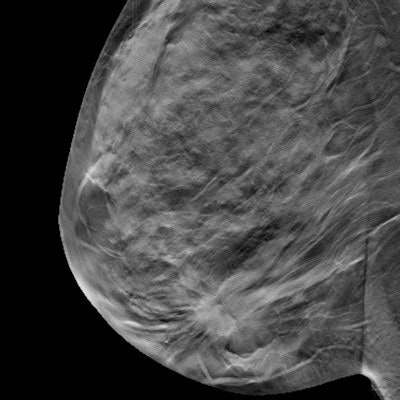
Digital breast tomosynthesis (DBT) has a higher cancer detection rate compared with full-field digital mammography (FFDM). And DBT's improved performance persists no matter the tumor type, size, or grade of cancer, according to a study published online October 16 in the American Journal of Roentgenology.
The findings have positive implications for the use of DBT in clinical practice, wrote a team led by Dr. Pragya Dang of Brigham and Women's Hospital in Boston.
"Our results suggest that integrating DBT into clinical practice may detect overall more cancers than does FFDM, for all tumor subtypes, grades, sizes, and nodal statuses," the group wrote.
Although DBT has become increasingly integrated into clinical practice, its impact on screening compared with FFDM when it comes to type, stage, and grade of cancers identified has not been clear, Dang and colleagues wrote.
"Although some authors have reported no difference in tumor features such as size, grade, and receptor status of screen-detected cancers detected by DBT when compared with FFDM, others have reported smaller and lower-grade tumors found with DBT than with FFDM," they noted.
Dang's group sought to compare cancer detection rates between the two modalities related to these tumor characteristics. The team reviewed 23,997 breast cancer screening exams taken between October 2012 and September 2014; of these, 14,180 were FFDM and 9,817 were DBT. Of the total number of exams taken, 61 proved malignant.
The researchers found that DBT had statistically significantly higher cancer detection rates than FFDM for all cancers except ductal carcinoma in situ (DCIS).
| FFDM vs. DBT by cancer type | |||
| Cancer type | FFDM detection rate per 1,000 exams | DBT detection rate per 1,000 exams | p-value |
| Total | 1.8 | 3.7 | 0.01 |
| Invasive | 1.3 | 2.8 | 0.01 |
| Estrogen receptor-positive invasive | 1.1 | 2.6 | 0.01 |
| Minimal (lesion 1 cm or less) | 1.2 | 2.4 | 0.03 |
| Node-negative invasive | 1.1 | 2.3 | 0.02 |
| DCIS | 0.5 | 0.9 | 0.22 |
Where the difference in cancer detection rates was not statistically significant between DBT and FFDM, such as with DCIS, the researchers noted the study was "likely underpowered to show a significant difference because of the smaller number of cancers in these subgroups," Dang said in a statement released by the American Roentgen Ray Society.
The study results add further support to the use of screening DBT, according to Dang and colleagues.
"Our findings suggest that DBT results in a significantly increased cancer detection rate irrespective of the tumor type, size, or grade of cancer and should be considered a valuable advance in breast cancer screening," they concluded.




















